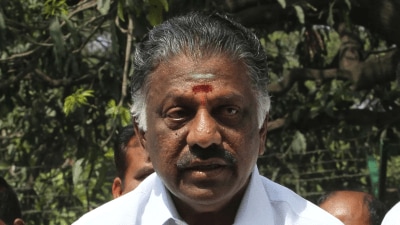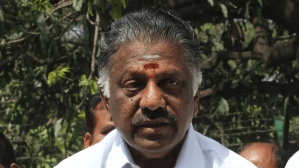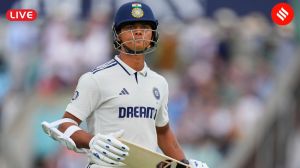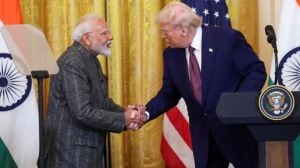Delhi to overhaul water supply: Just 29 lakh connections for over 1 crore residents
Sources said the matter was discussed in a recently held meeting between Home Minister Amit Shah and Chief Minister Rekha Gupta
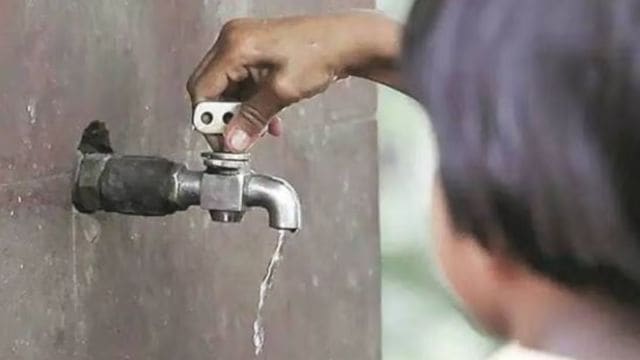 Sources said the Delhi government is also considering a revision of the water tariff, as a large number of consumers do not pay their bills (Express File)
Sources said the Delhi government is also considering a revision of the water tariff, as a large number of consumers do not pay their bills (Express File)A new bill collection system, smart metering for the entire city — a revamp of Delhi’s water supply system is on the cards to address challenges of revenue losses, it is learnt.
Cleaning the Yamuna river, resolving the water shortage that Delhi faces every year during summer, redeveloping the entire infrastructure to stop leakages, and addressing gaps and shortcomings in the water sector are some of the key priorities of the BJP government.
“At present, Delhi has approximately 29 lakh water connections, which is very insufficient. Most customers do not pay their bills, and there are several shortcomings in the billing system. Therefore, it has been decided to upgrade the entire city with smart metering and implement a new water bill collection system,” read a government document.
Water consumption up to 20,000 litres a month per household is free, a subsidy offered by the previous AAP government and continued by the BJP dispensation.
Sources said the Delhi government is also considering a revision of the water tariff, as a large number of consumers do not pay their bills. “The last tariff revision was in February 2018 and is still in effect; a decision regarding a future revision will also need to be made,” the document stated.
Sources said the matter was discussed in a recently held meeting between Home Minister Amit Shah and Chief Minister Rekha Gupta.

Officials also pointed out that “certain grievances were received [from consumers] that meter readers either do not upload a picture of the current reading or upload a random image and put a reading as deemed fit by them. At present, there are about 900-meter readers taking readings of about 26.50 lakh consumers in 41 zones of the Delhi Jal Board (DJB)”.
This not only leads to leakages in the billing system but revenue loss to the Jal Board. To address these challenges and issues, the Delhi government is taking several steps to revamp the water supply system.
Officials said, “In 2011-12, the Japan International Cooperation Agency (JICA) recommended carrying out a comprehensive review of water treatment plants (WTPs) in Delhi to reduce NRW or non-revenue water (water that is lost or unaccounted for in the water distribution system before it reaches the end-user), and suggested developing a detailed roadmap to address the issue… Presently, JICA and another technical agency are expected to conduct a detailed assessment of the water network as per the new guidelines, perform gap analysis, and prepare an action plan for NRW reduction.”
Officials said NRW stands at around 50–52%, indicating high losses.
Sources said the Ministry of Housing and Urban Affairs will take the lead to implement the measures, which will require financial assistance in the future from the Centre.
Sources said the DJB is also conducting a study by checking the litres of water being released to each area and the revenue generated through bills in these locations. The government will give time to the people to take new connections and pay bills, and those who do not meet the deadline will have to pay a fine.
Besides, the DJB has also made short- and long-term plans to increase daily water availability and has set targets to complete them. “Work is underway to source 26 MGD (million gallons per day) of water from 452 tubewells, and the deadline is September 2025. Construction of the 50-MGD Wazirabad WTP Phase 2 is ongoing and is expected to be completed by the end of this year, but the exact water source needs to be determined,” said officials.
The Jal Board is also planning to tap water sources in Uttar Pradesh, Uttarakhand and Himachal Pradesh to meet the city’s demands.
The Capital depends on neighbouring states to meet around 90% of its drinking water demands. The DJB gets raw water from four sources: 389 MGD (million gallons per day) from the Yamuna river; 253 MGD from the Ganga; 221 MGD from the Ravi-Beas river; and 126 MGD from groundwater. The water is then treated before distribution. Water from all these sources, however, amounts to around 990 MGD, falling short of the city’s estimated demand of 1,250 MGD.


